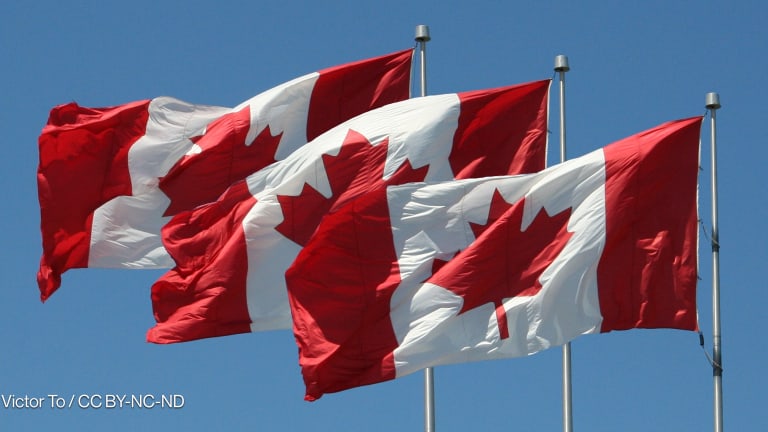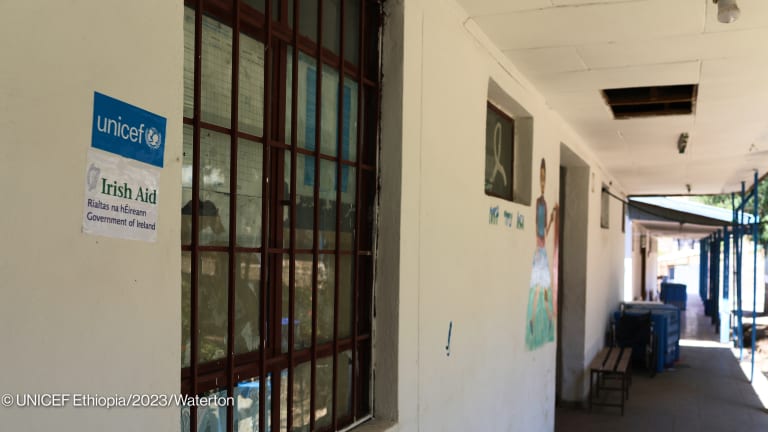Which donors back which multilaterals?
Bilateral donors channel a significant portion of their ODA through the multilateral system. We crunched the data to see the trends in the last five years.
Since the formation of the League of Nations in 1920, many other intergovernmental bodies have emerged and successfully become an integral part of the global development sector. These multilaterals rely heavily on the contributions of wealthy donors — both public and private — and we have seen in the past how changes in administration and shifts in policies could adversely affect not only the operations of these organizations but also the continuity of their development projects and humanitarian activities. In this analysis, we looked into the 2018 to 2022 data from the Organisation for Economic Co-operation and Development to see who among the Development Assistance Committee member countries spent the most multilateral aid, and which among the recipient intergovernmental bodies and funds got the largest support. All figures from the OECD are in 2022 U.S. dollar constant prices. How do donors spend their multilateral aid? Official development assistance has long been used as the gold standard in measuring the effort of public and private donors in supporting development, economic and social, and humanitarian projects in low- and middle-income countries through grants and concessional loans. ODA is disbursed via two main channels: Bilateral aid flows directly from the donors to recipients through government agencies, nongovernmental organizations, and the private sector. Donors may also ask multilateral agencies to implement bilateral activities on their behalf. This is called “bi-multi” aid. Although the money is disbursed through multilaterals, these funds are still considered bilateral aid since they are earmarked for specific purposes or projects, meaning the recipient has no autonomy in deciding where it will be spent. The other main channel of ODA is multilateral aid, which comes in the form of core contributions to intergovernmental agencies. These funds are pooled together and used by multilaterals to finance their own development projects. Which donors spend the most on multilateral aid? Of the total ODA from 2018 to 2022, between 24% and 30% went to multilaterals as core contributions. The biggest was in 2021, with $53.4 billion, or 29.6% of the $180.3 billion ODA. Meanwhile, between 15% and 23% of the total ODA was delivered as bi-multi aid, with the biggest in 2022, worth $48 billion. Our findings show that in the five-year period, the DAC member countries’ bi-multi spending grew much faster than their core contributions. From 2018 to 2022, DAC’s core contribution grew by 10.5% — from $45.7 billion to $50.6 billion — compared to the 88.7% rise in bi-multi aid spending — from $25.5 billion to $48 billion. In monetary terms, the same top ODA donors spent the most on core contributions. The United States and Germany disbursed $33.9 billion each during the five-year period, accounting for an annual average spending of $6.8 billion. U.S. and Germany also spent the most on bi-multi aid. The U.S. channeled a total of $52.5 billion in the five-year period — an average of $10.5 billion annually — while Germany spent $30.3 billion — an average of $6.1 billion annually. Relative to total aid, the Slovak Republic had the highest ratio of core contributions during the five-year period, spending an average of 76.6% of its ODA on multilaterals. Its highest rate was in 2019, with 80.4% of its ODA channeled via core contribution. The other top donors by percentage were Greece, with an average of 74.5%, Lithuania, with 73.7%, and Czech Republic, with 63.6%. Overall, 24 DAC members saw an increase in their core contributions during the five-year period, with their cumulative increase amounting to $9.8 billion. Meanwhile, seven donors recorded a $5 billion reduction in their core contribution in 2022 compared to 2018. As stated, the increase in bi-multi aid was more significant, with 22 donors spending $24.4 billion more in 2022 than five years ago. On the flipside, nine donors had a total dip of $1.8 billion. <div class='tableauPlaceholder' id='viz1725275886180' style='position: relative'><noscript><a href='#'><img alt='Trends in multilateral aid ' src='https://public.tableau.com/static/images/Tr/Trendsinmultilateralaid2018to2022/Trendsinmultilateralaid/1_rss.png' style='border: none' /></a></noscript><object class='tableauViz' style='display:none;'><param name='host_url' value='https%3A%2F%2Fpublic.tableau.com%2F' /> <param name='embed_code_version' value='3' /> <param name='site_root' value='' /><param name='name' value='Trendsinmultilateralaid2018to2022/Trendsinmultilateralaid' /><param name='tabs' value='no' /><param name='toolbar' value='yes' /><param name='static_image' value='https://public.tableau.com/static/images/Tr/Trendsinmultilateralaid2018to2022/Trendsinmultilateralaid/1.png' /> <param name='animate_transition' value='yes' /><param name='display_static_image' value='yes' /><param name='display_spinner' value='yes' /><param name='display_overlay' value='yes' /><param name='display_count' value='yes' /><param name='language' value='en-US' /><param name='filter' value='publish=yes' /><param name='showShareOptions' value='false' /></object></div> <script type='text/javascript'> var divElement = document.getElementById('viz1725275886180'); var vizElement = divElement.getElementsByTagName('object')[0]; if ( divElement.offsetWidth > 800 ) { vizElement.style.width='580px';vizElement.style.height='1507px';} else if ( divElement.offsetWidth > 500 ) { vizElement.style.width='580px';vizElement.style.height='1507px';} else { vizElement.style.width='100%';vizElement.style.height='1977px';} var scriptElement = document.createElement('script'); scriptElement.src = 'https://public.tableau.com/javascripts/api/viz_v1.js'; vizElement.parentNode.insertBefore(scriptElement, vizElement); </script><i style=font-style: georgia;”> Trends in DAC member countries’ multilateral aid spending from 2018 to 2022, based on OECD.</i> Which multilaterals receive the largest funding? OECD classifies multilateral recipients into seven main categories: European Union institutions, the International Monetary Fund, the United Nations agencies, the World Bank Group, other multilaterals, other regional development banks, and others that do not fall into any of the aforementioned categories. These main categories are further subdivided into over 200 agencies and funds. The following received the biggest among them. We looked at both total core contributions and total bi-multi aid from 2018-2022: ➡️ EU development share of budget Core contributions: $59,255,056,255. Bi-multi aid: $1,185,615,543. The “development share of budget” represents the EU’s budget for development-related activities. This includes the Multiannual Financial Framework, or MFF, which is the EU’s seven-year framework regulating its annual spending. The sum came solely from European donors, with Germany being the largest source — $13.3 billion in core contributions and another $342.9 million in bi-multi aid. Other top donors include France, with $9.8 billion in core contributions and $246.5 million in bi-multi aid, Italy, with $7.1 billion in core contributions and $183.4 million in bi-multi aid, and the U.K., with $5.7 billion all as core contributions. ➡️ International Development Association Core contributions: $36,529,207,175. Bi-multi aid: $283,417,484. IDA is the World Bank institution established to help the poorest countries by providing them zero to low-interest loans — called credits — and grants. The U.S. was IDA’s top donor, with $6.1 billion all disbursed as core contributions. Japan ranked next, with $5.6 billion, also all in core contributions, the U.K., with $5.5 billion in core contributions and $45,298 in bi-multi aid, and Germany, with $3 billion in core contributions and $100.4 million in bi-multi aid. ➡️ European Development Fund Core contributions: $22,402,212,070 Bi-multi aid: $15,330,146 EDF is the EU’s primary financing instrument for development cooperation with African, Caribbean, and Pacific, or ACP, countries and overseas countries and territories, or OTCs. The same top donors of the EU development share of budget were EDF’s main sources of aid. Germany and France disbursed both their aid entirely via core contributions, worth $4.8 and $4 billion respectively, while the U.K. spent $3.4 billion in core contributions and $9.7 million in bi-multi aid. ➡️ The Global Fund to Fight AIDS, Tuberculosis and Malaria Core contributions: $21,646,961,701. Bi-multi aid: $544,431,008. Since its inception, the Global Fund has disbursed over $65 billion for its fight against HIV, TB, and malaria. Based on OECD, the U.S. was its primary bilateral donor between 2018 and 2022, with $10.3 billion in core contributions. The U.K. ranked next, with $2.6 billion in core contributions, Germany, with $2 billion in core contributions and $184 million in bi-multi aid, and France, with $2 billion in core contributions and $709,151 in bi-multi aid. ➡️ Gavi, the Vaccine Alliance Core contributions: $11,159,492,996. Bi-multi aid: $4,279,696,806. Another multilateral public-private partnership in the list, Gavi, the Vaccine Alliance has delivered vaccines to more than a billion children across the world The U.S. is its lead donor, with $5.6 billion all in core contributions. Germany ranked next, with $1.6 billion in core contributions and $1.2 billion in bi-multi aid, the U.K., with $1.1 billion in core contributions and $7.6 million in bi-multi aid, and Norway, with $862.1 million in core contributions and $204.8 million in bi-multi aid. Try out Devex Pro Funding today with a free 5-day trial, and explore funding opportunities from over 850 sources in addition to our analysis and news content.
Since the formation of the League of Nations in 1920, many other intergovernmental bodies have emerged and successfully become an integral part of the global development sector.
These multilaterals rely heavily on the contributions of wealthy donors — both public and private — and we have seen in the past how changes in administration and shifts in policies could adversely affect not only the operations of these organizations but also the continuity of their development projects and humanitarian activities.
In this analysis, we looked into the 2018 to 2022 data from the Organisation for Economic Co-operation and Development to see who among the Development Assistance Committee member countries spent the most multilateral aid, and which among the recipient intergovernmental bodies and funds got the largest support.
This story is forDevex Promembers
Unlock this story now with a 15-day free trial of Devex Pro.
With a Devex Pro subscription you'll get access to deeper analysis and exclusive insights from our reporters and analysts.
Start my free trialRequest a group subscription Printing articles to share with others is a breach of our terms and conditions and copyright policy. Please use the sharing options on the left side of the article. Devex Pro members may share up to 10 articles per month using the Pro share tool ( ).
Miguel Tamonan is a Senior Development Analyst at Devex, where he analyzes data from public and private donors to produce content and special reports for Pro and Pro Funding readers. He has a bachelor’s degree in Political Science with a Major in International Relations from the Polytechnic University of the Philippines.








